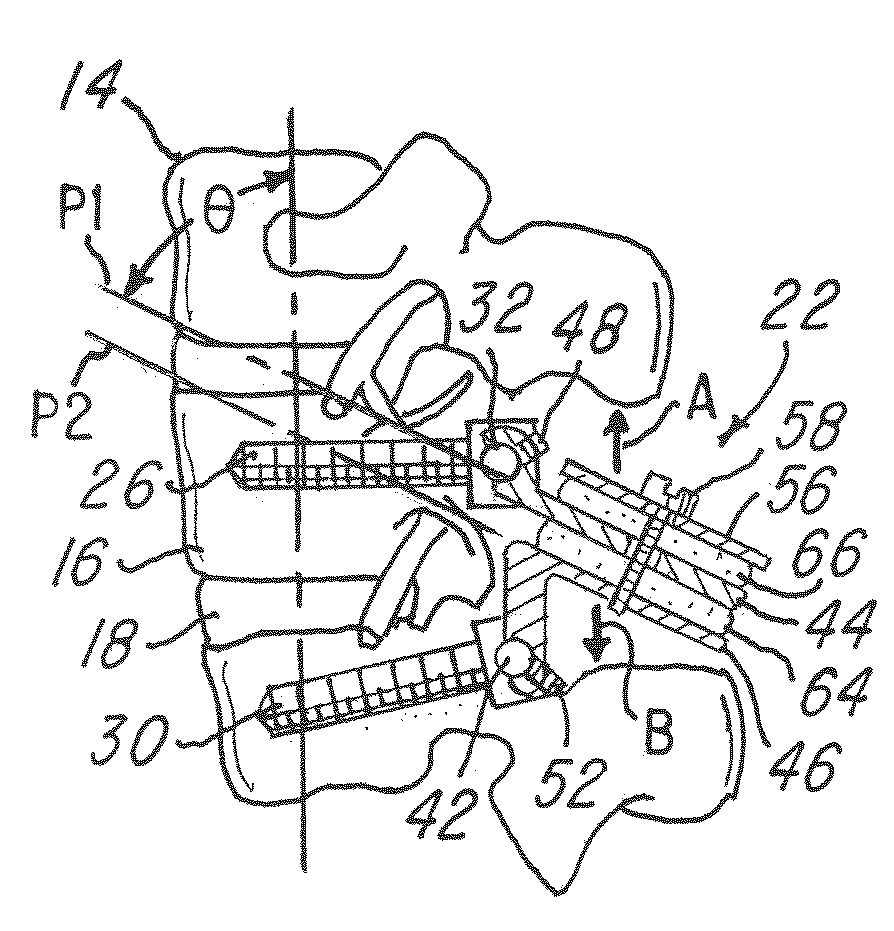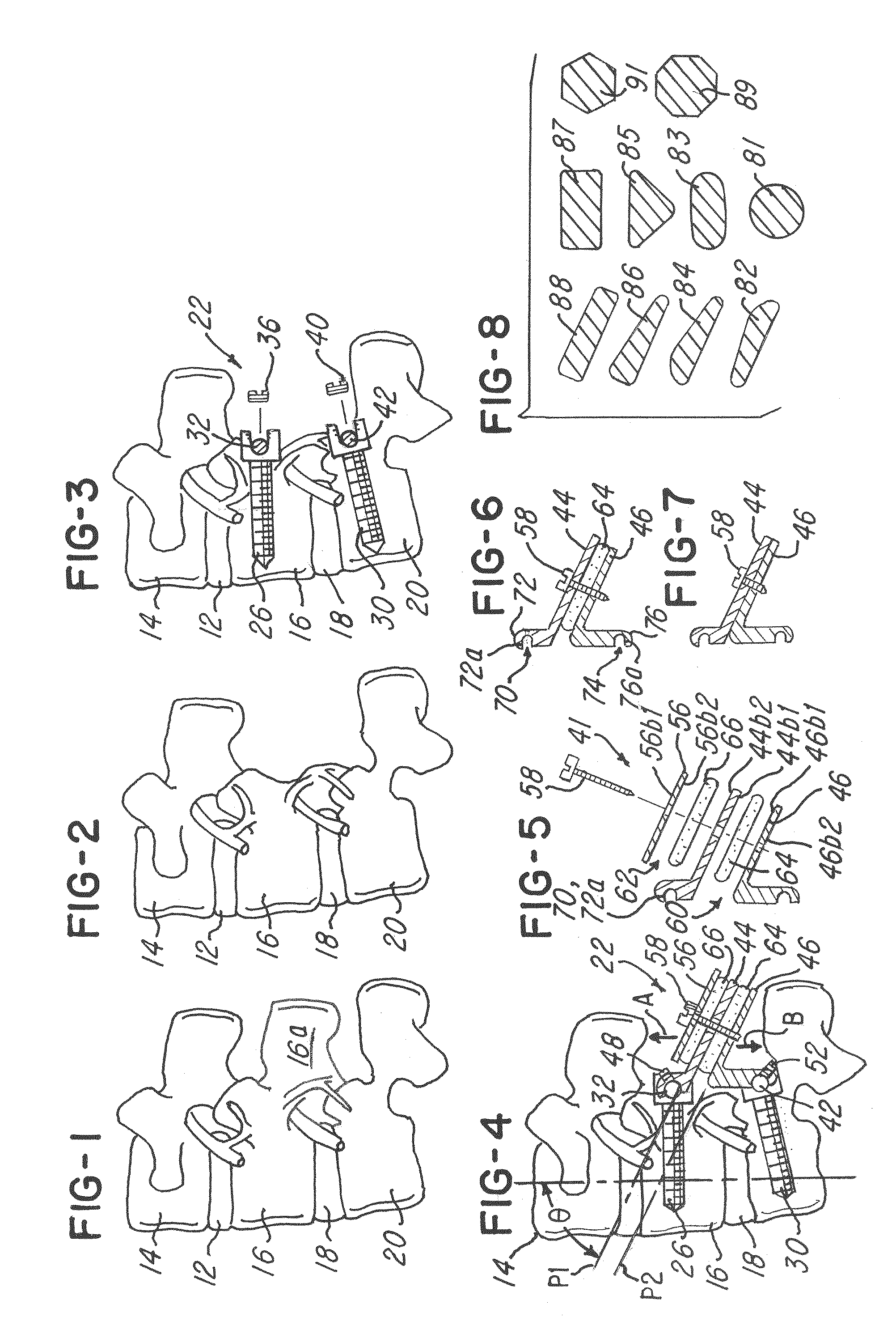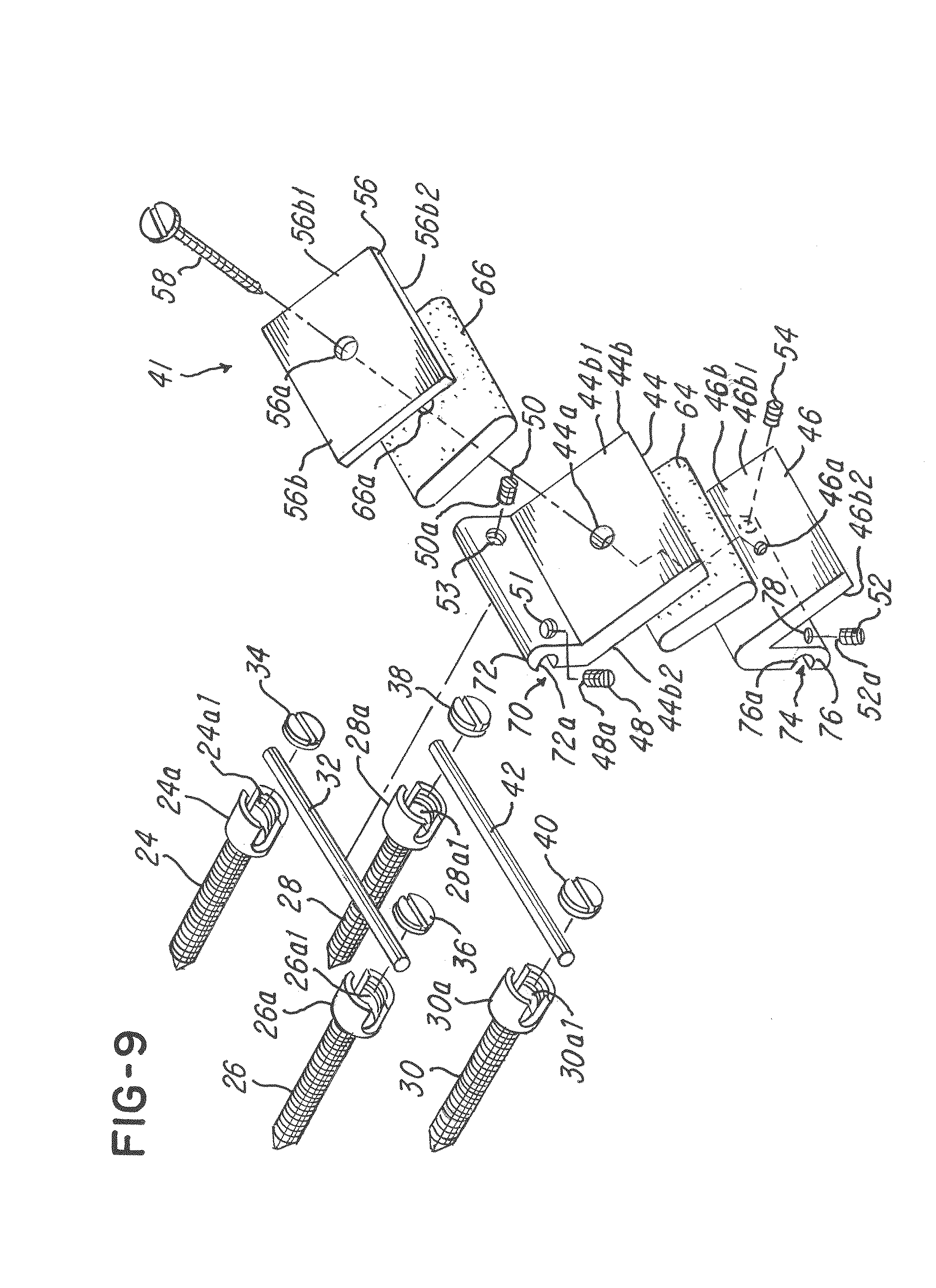Disk augmentation system and method
a disk augmentation and disk technology, applied in the field of disk augmentation system and method, can solve the problems of reducing reducing reducing the ability of the relative motion between the two vertebrae, so as to facilitate the reduction of the load on one or more disks
- Summary
- Abstract
- Description
- Claims
- Application Information
AI Technical Summary
Benefits of technology
Problems solved by technology
Method used
Image
Examples
Embodiment Construction
[0029]Referring now to FIGS. 1-11, a disk augmentation system and method will now be described. The system and method of the invention are used to facilitate reducing load on one or more disks, such as disk 12 between vertebrae 14 and 16 and disk 18 between vertebrae 16 and 20. The invention comprises means or a system 22 for reducing a load on at least one of lumbar disks when the vertebrae, such as vertebrae 14 and 16, move either away from or toward each other.
[0030]As illustrated in FIGS. 3, 4 and the exploded view in FIG. 9, the system 22 comprises a plurality of screws 24, 26, 28 and 30 comprising open heads 24a, 26a, 28a and 30a, respectively. In the embodiment being described, the open heads 24a, 26a, 28a and 30a comprise a receiving area 24a1, 26a1, 28a1 and 30a1, respectively. The areas 24a1, 26a1, 28a1 and 30a1 receive supports 32 and 42 as shown. For example, the open heads 24a and 26a receive a support or cylindrical rod 32 in the areas 24a1 and 26a1, respectively. The ...
PUM
 Login to View More
Login to View More Abstract
Description
Claims
Application Information
 Login to View More
Login to View More - R&D
- Intellectual Property
- Life Sciences
- Materials
- Tech Scout
- Unparalleled Data Quality
- Higher Quality Content
- 60% Fewer Hallucinations
Browse by: Latest US Patents, China's latest patents, Technical Efficacy Thesaurus, Application Domain, Technology Topic, Popular Technical Reports.
© 2025 PatSnap. All rights reserved.Legal|Privacy policy|Modern Slavery Act Transparency Statement|Sitemap|About US| Contact US: help@patsnap.com



